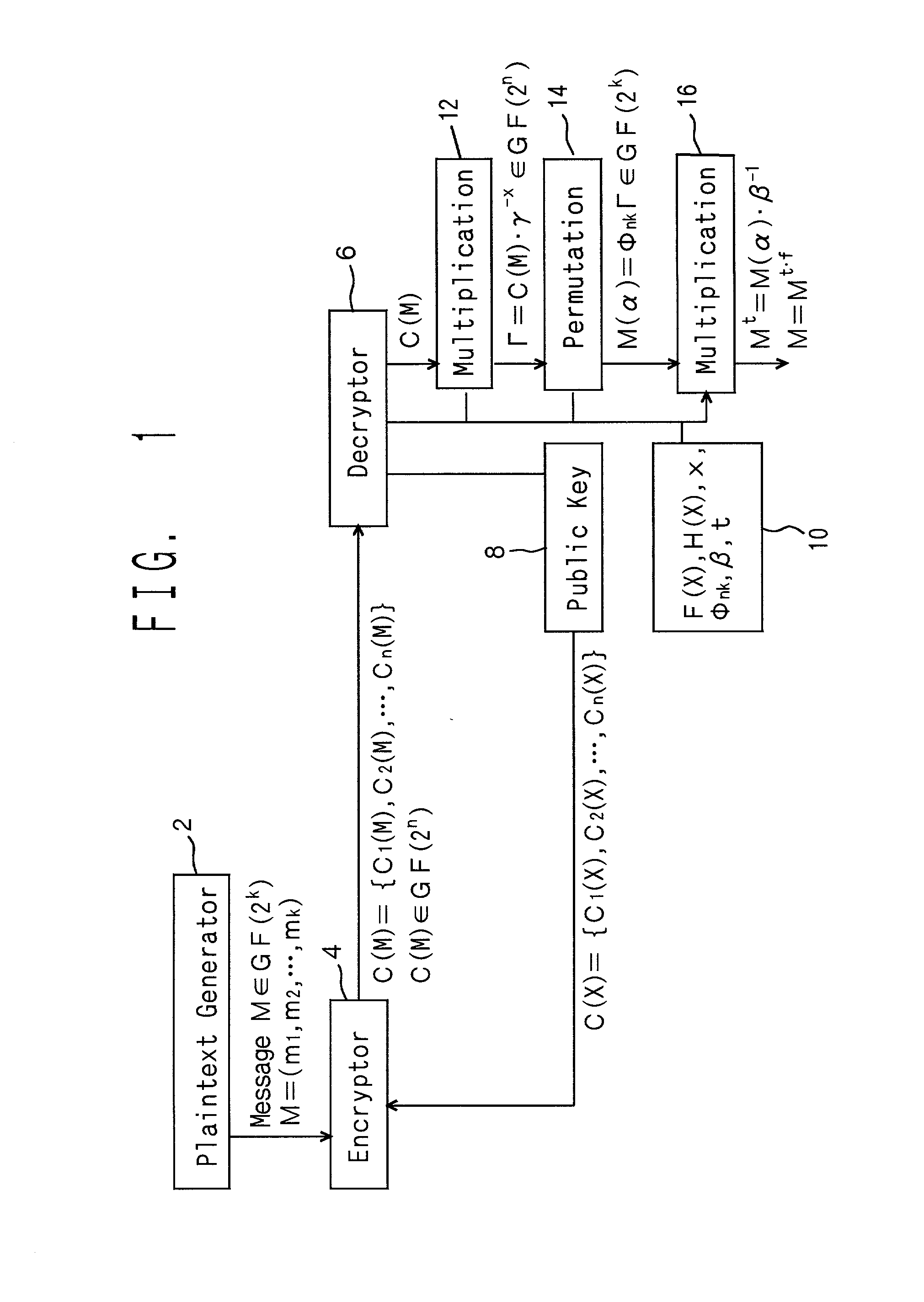Cryptosystem using multivariable polynomials
a multivariable polynomial and cryptosystem technology, applied in the field of cryptosystems using multivariable polynomials, can solve the problems of unclear security of such cryptosystems, unconfirmed security of cryptosystems using only multiplication of messages and polinomials, etc., and achieve the effects of enhancing security, facilitating decryption, and remarkably enhancing security
- Summary
- Abstract
- Description
- Claims
- Application Information
AI Technical Summary
Benefits of technology
Problems solved by technology
Method used
Image
Examples
Embodiment Construction
[0022] FIGS. 1 - 6 show the best embodiment. First, major terms in the embodiment are described. GF(2.sup.k) and GF(2.sup.n) show Galois fields, respectfully. The prime subfields contained in the Galois fields have characteristic of a prime number or 0, and when the characteristic is 0, the prime field is the field Q of rationale numbers. While the characteristic of the prime fields may be a prime number or 0, we prefer 2 for easier computation in digital information processing devices. The Galois fields GF(2.sup.k) and GF(2.sup.n) are examples of the finite extensions of the prime field of characteristic 2. The value of k is, for instance, among 64 and 16384, and we assume k 1024 in the embodiment. The value of n is greater than that of k, for instance, about 2k, preferably 128 to 32768, and we assume n 2048 in the embodiment.
[0023] F(X) is a primitive polynomial in the Galois field GF(2.sup.k) and has degree k. Similarly, H(X) is a primitive polynomial in the Galois field GF(2.sup...
PUM
 Login to View More
Login to View More Abstract
Description
Claims
Application Information
 Login to View More
Login to View More - R&D
- Intellectual Property
- Life Sciences
- Materials
- Tech Scout
- Unparalleled Data Quality
- Higher Quality Content
- 60% Fewer Hallucinations
Browse by: Latest US Patents, China's latest patents, Technical Efficacy Thesaurus, Application Domain, Technology Topic, Popular Technical Reports.
© 2025 PatSnap. All rights reserved.Legal|Privacy policy|Modern Slavery Act Transparency Statement|Sitemap|About US| Contact US: help@patsnap.com



